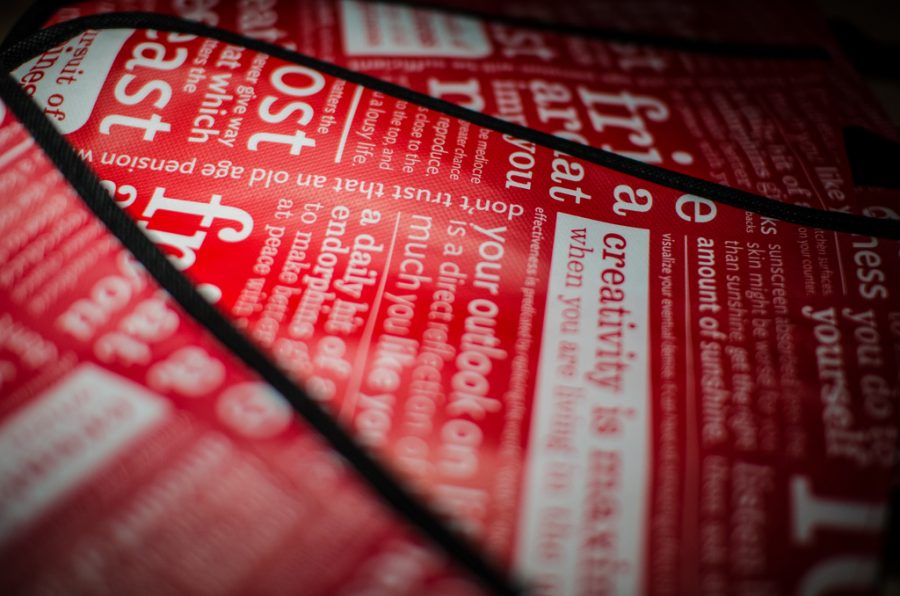Branding an empire
I had been shopping for two hours on Black Friday, but nothing compared to the war zone that I was about to enter. I looked at my friend with a little bit of fear as we entered the store. I could barely move more than three feet into the store from the number of people who were searching for their new workout tops and leggings. Unlike the other stores we had visited that day, this one played louder workout music, not the gentle Christmas songs that we had been hearing earlier. One of the employees clearly saw my cautiousness and whispered, “just duck your shoulder, and go for it.” I just entered Target or Walmart, right? Wrong. It was Lululemon. The funniest part of it? There wasn’t even a sale.
Many in our school don’t look to Lululemon for its ability to cater to different types of activities, they simply like the brand because it’s trendy. While in the store, I talked with a shopper who was around 18 or 19 years old; dressed in a maroon college sweatshirt and the giveaway of any girl from the area: deep black leggings with a circular white logo. As I approached this girl, Neha, she was looking over a shelf of leggings with her friend. Near the back of the store, I worked around a line of about 30 or so women who were all looking to try on their new clothing. We spoke a little bit about where she liked to shop for her athletic wear. It was a lot of the typical stores: Nike, Adidas, other high-end brands. But, she said the Lululemon was the main brand she shopped at. “It’s really trendy,” she told me. “Pretty much everyone shops [at Lululemon].”
I smiled politely, but I didn’t tell her that I’ve never shopped here. I have bought nicer athletic wear, but I’ve always found that my $25 leggings from Target do just as well as my $70 leggings from Athleta, which I had bought on sale. Neha said she would continue to shop at Lululemon, but she believed the quality of product that you receive at Lululemon isn’t worth the price you pay. Her cheeks began to turn red, and she let out a small, nervous laugh. But it wasn’t a laugh of humor; it was clear she wasn’t proud of her shopping habits.
So then why do we continue to buy such highly priced leggings? Take a look around our school. I’m willing to bet that at least 50 percent of the girls walking the halls have Lululemon leggings on. Many boys here have also begun to wear Lululemon’s men line. Even as I was discussing the idea of this essay with my friend, Natalie, she jumped at the idea. “Lululemon! OMG, I love their leggings, they’re so nice! I own so many clothes from there it’s not even funny,” she babbled on. On the one hand, I agree with her, Lululemon does make quality leggings. I saw this as I walked around the store on Black Friday. I picked up pants to feel the material, and they felt high-quality: stretchy, yet durable; they were thicker and sturdier than most of the other pants I own. Even the quality of material on the Athleta pants I own is very high. They have trendier zippered pockets, which I have never found at stores like Costco and Target. In addition to the high quality of their products, Lululemon also has a generous warranty, in which they will take back ripped or broken clothing for a brand-new item. They also offer free hemming on their clothing. These generous policies aren’t the norm in other stores. Even these policies don’t truly give you what you pay for. I could buy four or five pairs of leggings from Target for the price of one pair from Lululemon. Even with all they offer, it’s not a smart deal.
Shopping at big name stores harms small, local businesses that add to the economic progress of cities. Even Mayor Rahm Emanuel has said that “small businesses are the backbone of Chicago’s economy.” In part of the series, “Small Businesses, Big Problems,” written for NPR, many of the small business struggles are seen. In the third part of this series, “Big Business Freezes Out New York Ice Company,” Beth Fertig, NPR contributor, talked with the executive director, Jane McEwen, of a small ice manufacturing company. She noted that “almost half of the wholesale ice market is now controlled by three big companies.” This competition makes it harder for smaller businesses to compete, even when they are essential to cities’ economies. When you shop at a big store, you don’t only support corporate greed, but you harm the some of the backbones of our economy just so you can “fit in” to follow a trend.
Yet, I still wonder why people here spend all their money on one clothing brand? It’s certainly not financially smart, especially for people around here who don’t always work full-time and don’t even spend their own money. Here, there is a pressure for everyone to follow certain trends, as much as we deny it. I’ve found myself in stores like Urban Outfitters not even knowing why I walked through the doors in the first place. It’s not my vibe at all, it’s not what I like to wear. It’s all the constant, “I got it at Urban!” and “OMG you have to check out what they have at Urban!” that has lured me into the store where I find myself lost and out of place. While it may seem silly to discuss why the clothes we wear matter, my discussion of stores like Lululemon and Urban Outfitters is, in fact, addressing the larger matter of our importance of brands. Theses trendy stores have made sizeable profits off the idea that people will buy clothes for their brand, even if their product quality has dropped over the years.
Marketing company owner and contributor to Forbes Magazine, Lois Geller comments on why we put an importance on brands in her piece, “Why A Brand Matters.” She talks about how each brand is a collection of attributes that contribute to an appeal to each person. It’s not just the product that draws us to the brand, it’s what we associate with it. So, we put such an emphasis on brands like Lululemon because we associate it with ideals such as living an active lifestyle and being trendy and popular. Do these ideals match up with the people that we see wearing this brand? Not always. But because we associate it with this, we wear it more.
This idea of brand importance even carries over to parents. As I was working my way through the racks at Lululemon, I spotted a woman who seemed to be someone’s mom picking out different workout tops. This mom, Allison, talked with me about some of the other brands where she liked to shop. Like Neha, she wears higher end athletic brands such as Nike, Under Armor, and Athleta. She also agrees that the clothes are “unfit for the price,” though they “hold up well after washing.” But when I asked her about why she continues to buy at the brand after saying all this, she says it’s “because [Lululemon] is so big, I got into it because my daughter shops here too.” Even parents are beginning to pick up on what our generation views as trendy.
People will always go to what they find appealing to them, and brands like Lululemon have got it down to an exact science. We follow trends; whether that be politics or clothing, but it’s important to make decisions based the facts. Even acts like Juuling show following a trend, though it’s been proved that there are numerous health risks. And while I may never own a pair of Lululemon leggings, Hinsdale Central has been wearing them for as long as I can remember.














